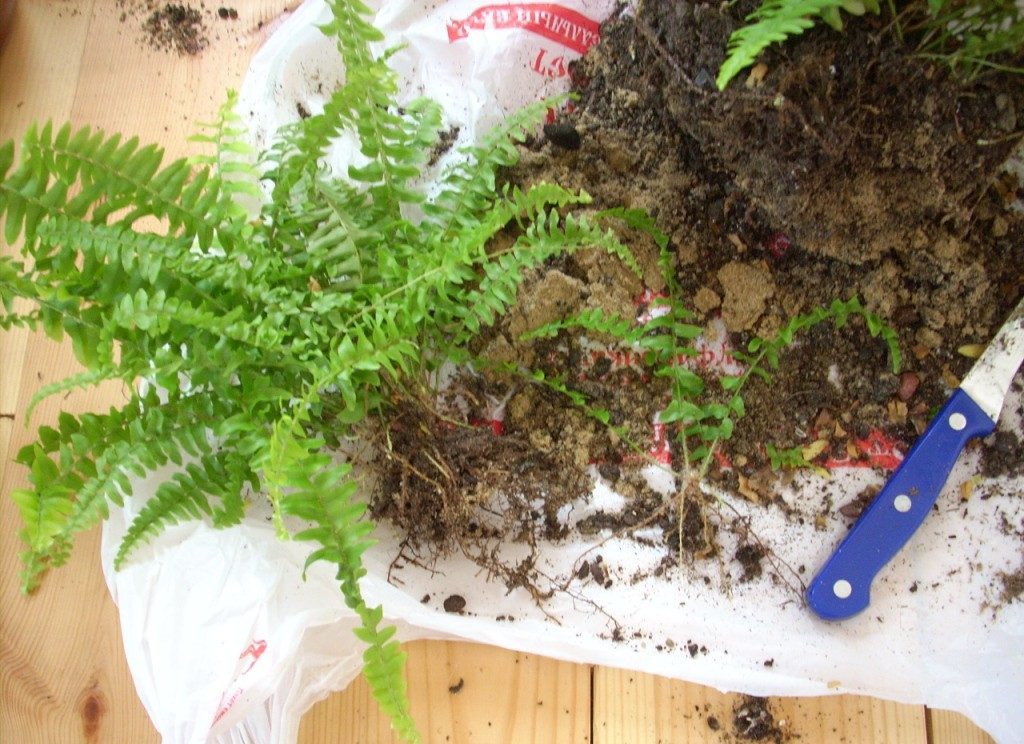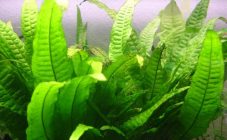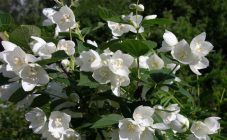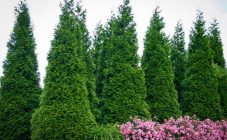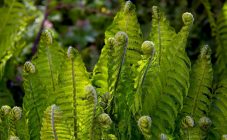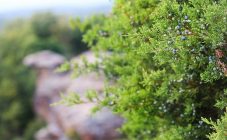Content:
Description of agriculture
Ferns are the oldest plants on the planet that have survived to this day. They are over 400 million years old. Agriculture has more than 10,000 varieties. Moreover, they can be so different that visually they can not be combined into one culture. The culture is unpretentious to the soil, resistant to high humidity.
In fact, the shrimp has no leaves. Those green leafy legs, which in our time are considered to be the leaves of the fern, are its branches. Breeders are trying to develop a fern variety that will have full leaves. A similar variety was bred and named "Lesna". Anyway, it is not considered a variety that has a full leaf. There are varieties in which the form of development is herbal, there are plants with a woody form of development. All of them are fern-like.
The fern has medicinal properties and has long been widely used in medicine. Long-term use of fern infusions and extracts has shown that the plant can relieve many diseases of the gastrointestinal tract, liver, respiratory tract, etc. On the Internet, you can find many explanations on how to make an infusion or decoction from a fern leaf on your own.
Nowadays, a fern in the country is not uncommon. Planting and caring for ferns in the open field is not difficult. Ornamental fern or street fern will develop equally under the conditions of proper care. The plant can be planted even in the Urals, given the climatic conditions of this region. How to plant a fern, how to grow it correctly, how to protect the fern from diseases, will be discussed below.
Planting and care in the open field
How to plant a fern in the country? Before planting a fern on the site, its variety should be determined. The seedling must be free of visible damage and disease. If the plant is transplanted, which has developed at home, it should be examined for the presence of pests and diseases of the root system. If a seedling is bought, it is recommended to make a purchase at agricultural exhibitions. In these places, there is much less chance of buying a fake variety. When buying, you should pay attention to the color and size of the leaves. The color should be rich green, the leaves should be the same length, without brown spots.
The next step will be the choice of a place for planting the shield. This stage is very important, since the choice of the seat affects its growth and development. How to plant a fern so that it grows beautiful and healthy? Fern planting and care in the open field has some nuances. The flower prefers shaded areas. The optimal planting place for a fern in the garden will be near a tree with a large crown. Moreover, it should not grow in a draft or be blown by all winds. Also, landing can take place in a place that is covered on one side by a fence or wall of the house. The presence of a reservoir in the immediate vicinity has a very good effect on the development of the thyme. Ferns are very often used in landscape design. These plants are used to create unique compositions.
The bushworm respects loose and light soil.Although it is not capricious in relation to the composition of the soil, some species can grow even in the crevices of a tree. Quite often, you can find shititnik in swampy places. This flower is very fond of moisture. He must have access to water, but it is desirable that the water can flow freely. For preventive purposes, drainage is used against rotting of the root system. In order for the shrimp to grow in a bush of a certain size, pieces of slate are placed in the hole in which the plant is planted.
It is recommended to transplant the plant under the open sky in the spring, after the air temperature has normalized and the last frosts have gone. The planting hole should be of such a size that the seedling is freely located in it. The distance between the bushes should be at least 40 cm. Fertilizers are added to the planting pit: it can be compost or mineral fertilizers. The soil mixture should contain peat, sand. During planting, it is advisable to ensure that the roots of the plant are not exposed. They must have an earthen lump from the past habitat. The roots are gently straightened in the pit, covered with earth, containing peat. The duckweed should be stable in the pit.
Watering is the most important condition for the development and growth of the plant. A young plant, or a plant that has recently been transplanted, needs daily watering for several months. After watering, the soil needs loosening. This helps oxygen to reach the root system. Also, at this time, you need to remove the weed that clogs the plant. Further, the planting pit should be mulched. This will keep moisture and reduce the amount of weeds. Spruce needles are considered useful mulch.
Ferns grow rapidly, and in order for the plant to look well-groomed and healthy, it needs to be thinned, once a year. When thinning a plant, you can transplant and propagate it. When growing and thinning, diseased or damaged sockets are removed. The number of transplants should be limited as the fern grows accustomed to its specific habitat.
Most species of dryworm tolerate winter and low temperatures. But there are species that need shelter. For a safe and proper shelter of the plant, you need to mulch the soil with straw so that the roots do not freeze, and gently bent the fern leaves to the ground, cover with straw and stretch agrofibre or greenhouse film on top.
Planting and caring for a fern in the garden will not be difficult for a novice gardener. The bushworm will adorn any site.
Plant propagation methods
The fern can be propagated in several ways: by spores, by dividing the root, dividing the bush and layering.
Most often, the shrimp reproduces with the help of spores. The spores mature in small clusters on the inside of the leaf. At the end of summer, they ripen and darken. Disputes do not like direct sunlight. They are sown in a container filled with peat. From above, the container is closed with a greenhouse film or glass; it is recommended to ensure that the soil is always moist. The first shoots can be seen after 2 weeks. You can plant a plant that has grown from a spore no earlier than 2 years later. Flowers that have developed from spores will have strong immunity, they will be stronger and stronger.
Ferns can also reproduce by root division or layering. To do this, it is necessary to separate the rhizome, 25 cm in size, it must have at least two buds. Shoots with a root less than 25 cm may also work, but under certain factors.Such shoots can be divided into a couple of bushes, this is done in early spring, during cool weather, when it is best to plant a fern. Autumn is also good for fern breeding. When dividing the bush, the roots should have several rosettes that can be cut with a knife without damaging the root system of each rosette. After the outlets are planted, they need abundant watering. In a fern that does not have rosettes, reproduction occurs only through spores. When the fern can be transplanted, the weather will tell you. This usually happens in early spring, but when the threat of frost has passed.
Diseases and pests
Fern is a crop that is highly susceptible to disease and pest attacks.
Diseases of flowers are divided into several forms:
- Infectious;
- Bacterial;
- Fungal;
- Viral.
Infectious diseases are treated exclusively by removing and destroying the affected areas of the plant.
The most common fern diseases are:
- Anthracnose. The symptoms of this disease are as follows: fern leaves are covered with rusty spots. The measures to combat this disease are as follows: the affected leaves are cut off and destroyed, a fungicide is applied to the plant, and watering of the plant is reduced for a short time.
- Root rot. The disease is manifested by yellowing of the leaves. After some time, the leaves dry out and the plant dies. Since the plant becomes sick due to high soil moisture, in order to avoid it, it is required to reduce the amount of watering.
- Leaf spot. A characteristic sign of the disease is the appearance of small moist brown spots over the entire surface of the leaf. Over time, the spots increase in size and merge into one large one. Treatment consists in removing and destroying the affected leaves. After that, it is recommended to spray the plant with a fungicide and not water it for about 5 days.
- Rot is gray. The disease can be recognized by the following signs: gray mold appears on the entire surface of the plant. The disease can be prevented in such ways: ferns do not sit close to each other. If the ferns grow at home, the room in which they are located is ventilated every two days. When watering the plant, it is recommended to ensure that no water gets on the fern leaves. Also, when applying fertilizers to the soil, care should be taken that they do not contain large quantities of nitrogen. Nitrogen affects the plant in such a way that the upper tissues of the plant soften, immunity decreases, and the flower becomes too susceptible to infections and viruses. As soon as the initial stage of the disease has been noticed, the affected parts should be removed and destroyed. For the rest, adhere to prevention against this disease.
Among the pests that most often attack the fern, the following can be distinguished:
- Whitefly. The pest can be seen from the inside of the leaf. Small white flies. To rid the fern of the whitefly, it is recommended to shake the plant in the fresh air. This measure is used for minor damage to the plant.
- Fools. Milky-colored insects that crawl in the soil. Getting rid of a pest is not so difficult. It is enough to stop waterlogging the ground and sprinkle it with dry earth or sand.
- Mealybug. The pest can be recognized by the white cotton covering that forms on the soil and root system of the plant. In order to get rid of the pest, you need to cleanse it of the affected soil, thoroughly clean the root system under a strong stream of water.
- Nematodes. Discharge begins to appear on the sheet, which then turns brown. Worms provoke the death of a flower, which infect the root system.In order to get rid of the worm, it is recommended to renew the plant roots, change the soil and root the fern again.
- Spider mite. On too dry air, very small mites appear on the inside of the leaf, which feed on the juices of this plant. In addition to feeding on ferns, mites also weave webs. On this basis, the pest is recognized. In order to get rid of the tick, the plant must be sprayed with diluted turpentine.
- Aphid. Fern leaves become sticky and begin to deform and dry out. Aphids can carry various diseases. These are small insects that appear on the inside of the leaf. They feed on plant sap. You can get rid of aphids by pruning the plant. A solution with garlic has proven itself very well. Spray leaves and topsoil.
- Scratch. White bloom on the plant, similar to cotton wool. The plaque is removed with napkins, the leaves are wiped with soapy water. You can also treat the leaves with an alcohol solution. Cleaning should be done every other day, until the symptoms disappear.
The plant needs a weekly inspection. This is the only way to grow a healthy fern. It is not so difficult to care for him, you just need to observe the regularity of watering and inspect the plant for diseases and damage.



